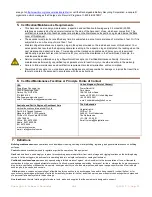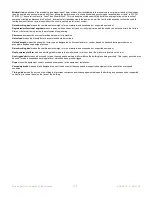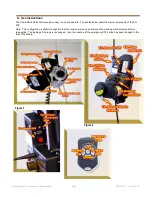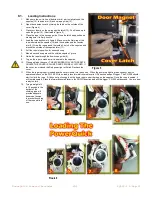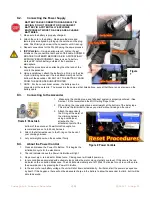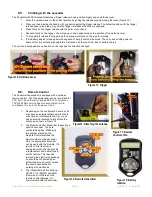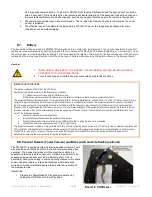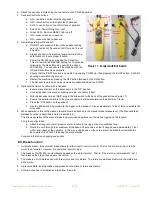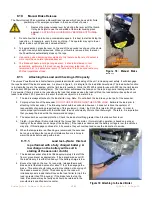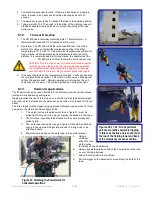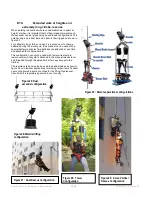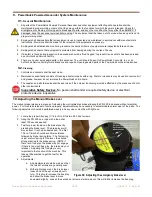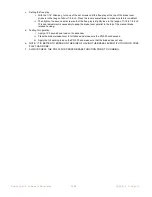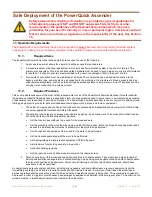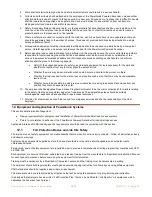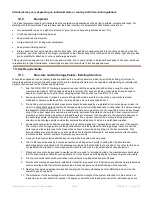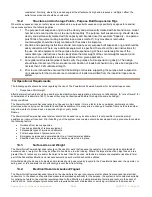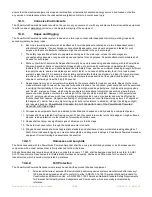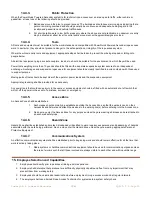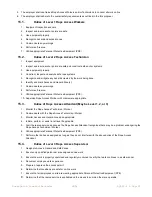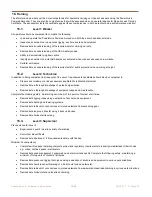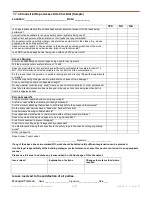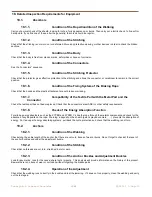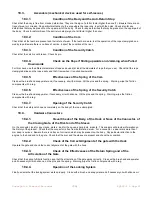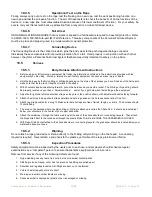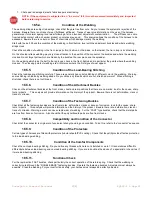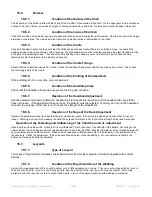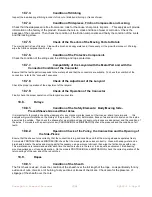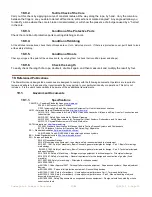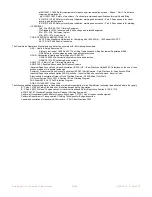
PowerQuick Powered Ascender
(20)
PQ500-1 1-Sep-15
4. Work shall not start where high winds and environmental factors could result in a serious hazard.
5. All tools and other items shall be attached to the employee or the PowerQuick Powered Ascender, unless another
effective method is used to prevent a falling hazard. Any item over 25 pounds or of a shape that is difficult to handle
shall be lowered and supported on a separate line. Care must be taken to ensure that no item can become
dislodged or fall and create a hazard for those below.
6. Safety, Secondary, Belay or Backup line(s) or other appropriate fall arrest devices shall be used in addition to the
main line unless the employer can demonstrate that the second line or other fall arrest devices would create a
greater hazard or otherwise would not be feasible.
7. Where a safety line is used in conjunction with the main line, each line should have its own separate anchor and
should be separately fixed to the worker’s harness. This does not preclude both lines being attached to a single
harness attachment point.
8. All suspension equipment must be individually identified and should be checked on a daily basis by a competent
person. Careful inspection and service records must be kept for the PowerQuick Powered Ascender.
9. Before adopting rope access techniques for a particular job, the property owners, the main contractors and others
responsible for commissioning the work shall do a risk assessment, which would include consideration of the
various rope access alternatives available and their respective access advantages and hazards. In particular,
attention shall be given to the following aspects:
Ability of the suspended person to safely use materials, equipment or tools necessary for the work and
whether the reaction from any tool may place the person at risk.
Whether the work may loosen material, which could become a hazard to the worker or others.
Whether the time required for the work at any one location will be such that there may be unacceptable
levels of risk.
Whether it would be possible to quickly rescue workers that are using rope access techniques from any
position they could be expected to enter.
10. The employer shall designate a Rope Access Program Coordinator to be the main contact point for matters relating
to the safety, training and regulatory aspects of rope access. The designated person should be suitably
knowledgeable, experienced and qualified in rope access techniques.
11.
Provision for prompt rescue or self-rescue and for emergency services shall be the responsibility of the Host
Employer.
12.
Equipment and Application of PowerQuick Systems
This section details important aspects of:
Design requirements for equipment and installation of PowerQuick industrial rope access systems.
Points to note relative to safe use of the PowerQuick Powered Ascender for industrial rope access.
Applicable State and OSHA industry-specific requirements should be read in conjunction with this section.
12.1.
Fall Protection Basics and Job Site Safety
The improper use of safety equipment can create hazards that may result in serious injury or death. Follow all instructions closely
and observe warnings.
Systems using components supplied by more than one manufacturer may not be interchangeable and could also create
unforeseen hazards.
Employers & users of safety equipment are required by law to provide a comprehensive training program that complies with CFR
29-1926: 503.
Each employer or user must first read, understand, and receive training from the manufacturer’s “Specification/Instruction” Manual
for each type of component, before ever using the equipment for fall protection.
Training must be carried out by a “Qualified or Competent” person and the training must be documented in writing.
The employer should hold regular safety meetings and provide ongoing instruction for all employees using safety equipment.
OSHA standards should be regarded as a minimum requirement.
This manual should be carefully studied by all persons that will be using this equipment or giving training and instruction.
It is advised that employers have a written “Fall Protection Plan” that can be modified for “Job Specific” circumstances which
addresses the hazards of each project.
Summary of Contents for PQ 500-1
Page 46: ......
Page 48: ...NOTES...

